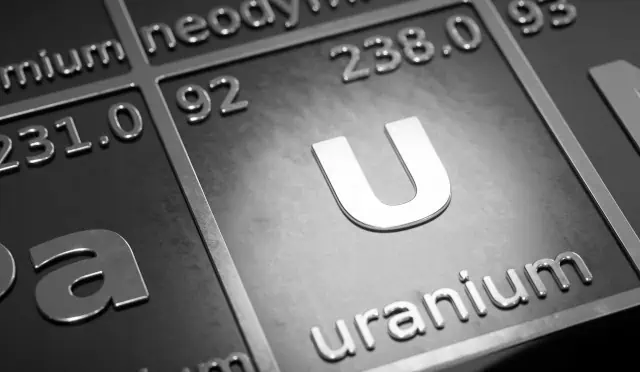Mining juniors thrive on old stories made new. Myriad Uranium’s [CSE:M/FSE:C3Q] latest tale comes from the archives — literally. The Canadian-listed explorer has unearthed a 600-page U.S. Department of Energy study from 1982 that could transform its understanding of the Copper Mountain uranium district in Wyoming.
The report, produced by Bendix Field Engineering for the DOE, is the sort of dusty, data-rich document geologists dream of. Until now, Myriad only had a summary version; the full “Exploration Systems Approach” study, newly obtained, includes the fine-grained drilling and structural data compiled from Union Pacific’s uranium foray in the 1970s — a C$118 million exercise (in today’s money) that ended abruptly when the uranium market collapsed.
Bendix had access to everything Union Pacific drilled, mapped and measured — roughly 2,000 boreholes across a cluster of deposits, plus their own supplementary fieldwork. It is a treasure trove for Myriad, which along with partner Rush Rare Metals now controls about 70 per cent of the “Control Area” at Copper Mountain.
- Should you be investing in the copper boom?
- Ucore Rare Metals stock up 80% in a month on bold roadmap
- Positive results from Pulsar Helium’s Greenland project
That area alone, according to the 1982 analysis, contained a potential uranium endowment of around 245 million pounds down to 600 feet. A wider “Assessment Area” was estimated at 655 million pounds.
Caveats abound. The figures are historical and do not qualify as compliant mineral resources under modern reporting codes. They were based on structural scoring and limited by the technology and geological models of the time. Still, the scale is tantalising: in uranium, where a million pounds can move a small-cap’s share price, hundreds of millions make investors sit up.
Copper Mountain operators “barely scratched the surface”
Chief executive Thomas Lamb certainly sounds animated. He argues that Copper Mountain remains underexplored and that operators such as Union Pacific and Anaconda “barely scratched the surface” beyond known deposits. Myriad’s own drilling in 2024 confirmed mineralisation below the historical “hard deck” of 600 feet — including intercepts at nearly 1,500 feet — raising the prospect of deeper, unconformity-style deposits linked to thrust faults. These are the same geological features that underpin some of the world’s richest uranium mines.
The rediscovered Bendix data, meanwhile, will help refine targeting. Structural modelling from the 1980s identified fault intersections and graben zones as key controls on mineralisation. Those same patterns remain visible in modern geophysics, and several high-priority targets fall within Myriad’s ground. For an explorer trying to stretch limited capital, that sort of roadmap is invaluable.
Copper Mountain is the prize for Myriad Uranium
Myriad’s broader portfolio — a stake in Nova Scotia’s Millen Mountain property and a pending acquisition in New Mexico — provides diversification, but Copper Mountain is the prize. The district’s Arrowhead Mine once produced half a million pounds of uranium oxide; Union Pacific even drew up a full mine plan before prices collapsed in 1980.
Forty-five years later, the industry’s mood is very different. The uranium price has doubled since 2021 as utilities scramble for supply outside Russia, and the U.S. government pushes domestic production.
Investors should not get carried away. Turning 1980s “endowment estimates” into modern resources will require drilling, money and luck. But the rediscovery of Bendix’s forgotten study gives Myriad something most juniors lack: a data set built on serious past spending and a geological model that already fits the modern nuclear narrative.
Old rocks, old reports, new relevance — the market may yet decide that Myriad’s ghosts from the atomic age are worth resurrecting.























